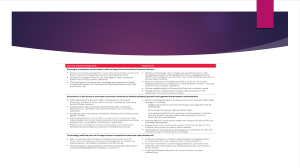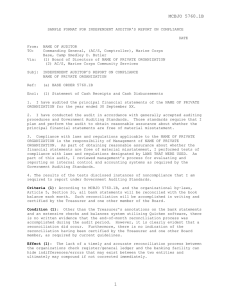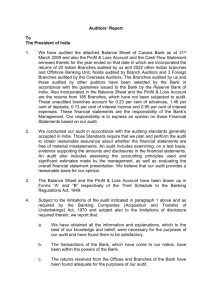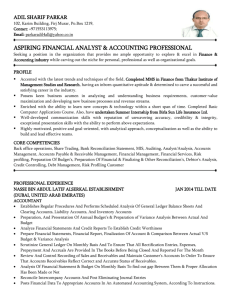cost audit
advertisement
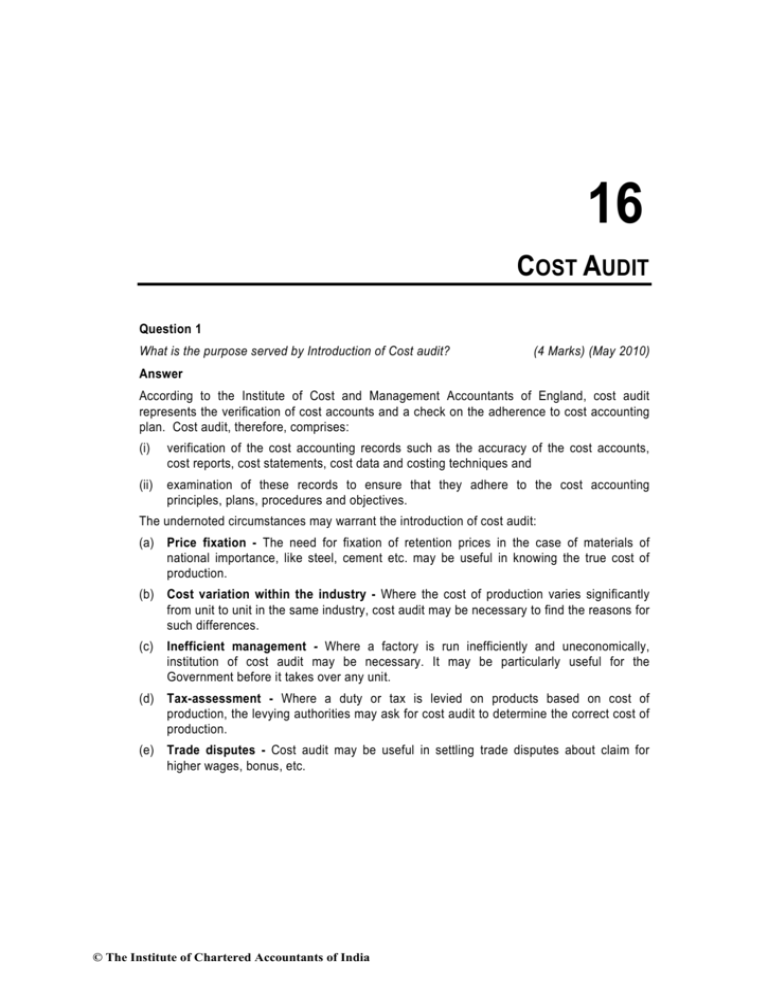
16 COST AUDIT Question 1 What is the purpose served by Introduction of Cost audit? (4 Marks) (May 2010) Answer According to the Institute of Cost and Management Accountants of England, cost audit represents the verification of cost accounts and a check on the adherence to cost accounting plan. Cost audit, therefore, comprises: (i) verification of the cost accounting records such as the accuracy of the cost accounts, cost reports, cost statements, cost data and costing techniques and (ii) examination of these records to ensure that they adhere to the cost accounting principles, plans, procedures and objectives. The undernoted circumstances may warrant the introduction of cost audit: (a) Price fixation - The need for fixation of retention prices in the case of materials of national importance, like steel, cement etc. may be useful in knowing the true cost of production. (b) Cost variation within the industry - Where the cost of production varies significantly from unit to unit in the same industry, cost audit may be necessary to find the reasons for such differences. (c) Inefficient management - Where a factory is run inefficiently and uneconomically, institution of cost audit may be necessary. It may be particularly useful for the Government before it takes over any unit. (d) Tax-assessment - Where a duty or tax is levied on products based on cost of production, the levying authorities may ask for cost audit to determine the correct cost of production. (e) Trade disputes - Cost audit may be useful in settling trade disputes about claim for higher wages, bonus, etc. © The Institute of Chartered Accountants of India 76 Advanced Auditing and Professional Ethics Question 2 Write short notes on Reconciliation of Cost and Financial Accounts. (5 ´ 4 = 20 Marks) (November 2010) Answer Reconciliation of Cost and Financial Accounts. The cost records should be reconciled (preferably periodically with the financial books of account so as to ensure accuracy.) Variations if any should be clearly indicated and explained. The period for which such reconciliation be effected should not exceed the period of the financial year of the company. The reconciliation should be done in such a manner that profitability of the product under reference can be correctly adjudged and reconciled with the overall profits of the company. A statement showing the total expenses incurred by the company, including expenses excluded from the costing records and expenses on products not covered by the relevant Cost Accounting Records Rules, should be prepared and the share of the product covered by the Rules in such expenses should be indicated. Also the sale realisation of the products should be shown separately for products covered by the Rules and products not so covered and the margin representing the difference between respective sales realisation and the corresponding total cost should be determined. This statement in turn should be reconciled with the financial profit and loss account for the period. It may be mentioned that where a system of integrated cost and financial accounting is in operation, this reconciliation will be facilitated to a large extent. In this connection it may be noted that Schedule VI to the Companies Act requires the companies to give considerable amount of information regarding licensed capacity, installed capacity, actual production, consumption of raw material, etc. It should be ensured that the specific information required to be contained in both the costing and financial statements is not different. If at all any difference arises, the same should be properly reconciled and kept on record for reference. © The Institute of Chartered Accountants of India
